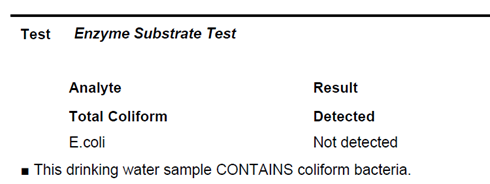Vermont is in a severe drought. If you are out of water and need help finding a safe source, contact your town's emergency management director.
If you use a private well or spring, find out what to do if you think you're running out of water.
Test your drinking water regularly.
It is important to regularly test your private well or spring for contaminants to make sure your water is safe to drink.
If you get a water bill, you are on public water. The Health Department recommends testing your water for lead. Learn about testing recommendations for public water
How to Test Your Private Drinking Water
The Health Department recommends testing your water with the Homeowner Testing Package every five years, and for bacteria every year. This package includes tests for bacteria, inorganic chemicals and gross alpha radiation, which are the most common drinking water contaminants in Vermont.
Follow these steps to test your water and find out if you need to treat it.

